Are you also curious about our Sardinia sights in the south? After exploring the north and west of the island, we continued on to the south of Sardinia in our rental car. Here, we were greeted by stunningly beautiful and, above all, long sandy beaches, crystal-clear waters, less rugged coastlines, charming little towns and villages, great viewpoints, delicious Sardinian dishes, and plenty of scenic roads worth seeing.
In the following post, we’ll take you virtually on our exploration tour of the south of Sardinia and show you our absolute highlights and must-see places. Have fun browsing!
What else you should know
- Sardinia’s highlights in the north
- Sardinia’s highlights in the west
- Sardinia’s highlights in the east
- The most beautiful beaches on the island
- Costs of our Sardinia tour
- Our beautiful Accommodations
- Travel preparation for Sardinia
- 16-day Sardinia round trip
- What else you should know
- Sardinia sights in the south – an overview
- 1. Start in Carbonia
- 2. The islands of St. Antioco and San Pietro
- 3. The dunes of Porto Pino
- 4. Spiaggia di Piscinnì and Torre di Pixinnì
- 5. Spiaggia di Tuerredda
- 6. Lunch break at Su Giudeu Beach
- 7. Picturesque town of Pula
- 8. The island’s capital, Cagliari
- 9. Panoramic road Strada Provinciale 17
- 10. Fishing village of Villasimius & beaches
- 11. Hike to Capo Carbonara
- 12. The beautiful Costa Rei
- 13. Hike to Monte Ferru
- Sardinia’s sights in the south – our conclusion
- How much time should I plan for the south of Sardinia?
- When is the best time to travel to Sardinia?
- Which accommodations do you recommend?
- How much does a rental car cost in Sardinia?
- How much does a Sardinia tour cost?
- Which travel guide should I use for planning?
Sardinia’s sights in the south – an overview
On the following map, we have marked our most beautiful Sardinia sights in the south. For the south coast of Sardinia, we recommend at least 4 to 5 days during a Sardinia tour so you can explore the many beautiful spots at your leisure. The more time you have, the better.
We spent 2 nights in Carbonia and 2 nights in St. Vito before moving further east. This allowed us to take a leisurely look at the beautiful sandy beaches, some panoramic roads, and charming towns and villages. Here in the south, you can also spend your 7 to 10-day summer vacation in a relaxed manner. If you don’t want to drive around the island, you’ll find plenty of vacation homes, apartments, hotels, and guesthouses here.
The tourist infrastructure in the south is also very well developed, and you’ll find practically everything you need for a thoroughly successful vacation. Personally, we find the north and northeast a little more exciting and beautiful, but that’s purely a matter of taste!
Our entire route at a glance:
- 2 nights in Olbia
- 2 nights in Santa Teresa Gallura
- 2 nights in Porto Torres
- 1 night in Alghero
- 2 nights in Oristano
- 2 nights in Carbonia
- 2 nights in San Vito
- 2 nights in Santa Maria Navarrese
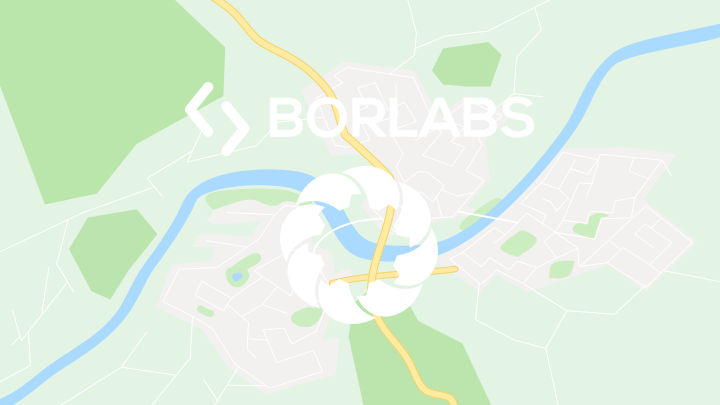
By loading the map, you accept Google’s privacy policy.
Find out more
Load map
1. Start in Carbonia
The starting point for our exploration of the south was our beautiful accommodation in Carbonia. We stayed at the enchanting A Casa Di Angela B&B*, which was definitely a highlight of our trip. Not only because we had a wonderful time with the hostess, Angela, but also because the house is truly beautifully designed. Three rooms are rented to guests, who can look forward to a lush garden with a pool. In our separate post about our booked accommodations in Sardinia you will find further details and photos of this accommodation.



2. The islands of St. Antioco & San Pietro
Two guests who were also staying at our B&B took the ferry to the two offshore islands of St. Antioco and San Pietro. Unfortunately, it didn’t fit into our schedule at all, so we decided not to visit these two islands. Nevertheless, we don’t want to leave these highlights in southwest Sardinia unmentioned.
Here you can expect stunningly beautiful bays, pretty towns, a rugged rocky coastline, and unusual rock formations. You can easily reach the island of Sant’Antioco by car or bicycle, as it is connected to the mainland by road. Only for the smaller island of San Pietro, you must take the ferry. These depart from Portovesme (45 minutes) or Calasetta (30 minutes). Tickets start at €8 to €9 per person (on foot) and between €20 and €30 (depending on the length of the journey). The guests from our B&B found their trip to San Pietro and Sant’Antioco very enjoyable.
Sights worth seeing on both islands:
- the main town of Sant’Antioco with its colorful houses
- the small town of Calasetta
- the natural pool L’Arco dei Baci
- the beaches Il Molo di Masua and Coacuaddus
- the colorful center of Carloforte on San Pietro
- Spiaggia La Bobba, Spiaggia La Calleta, Cala Fico
- Capo Sandalo cliffs
- Sant’Antioco from Carloforte: Daily boat trip with snorkeling*
3. The Dunes of Porto Pino
We set off south in our rental car and stopped at the “Stagno di Porto Botte” because we could already spot some flamingos from a distance. We then continued on to Porto Pino. This small resort with a large bay is especially popular with water sports enthusiasts (kite surfing, etc.) as there’s always a gentle breeze here.
Families with children can also enjoy the day to the fullest on the fine sandy beach with shady pine forests. At the southern end of the bay, a beautiful white sandy beach with large sand dunes and shallow water awaits you.
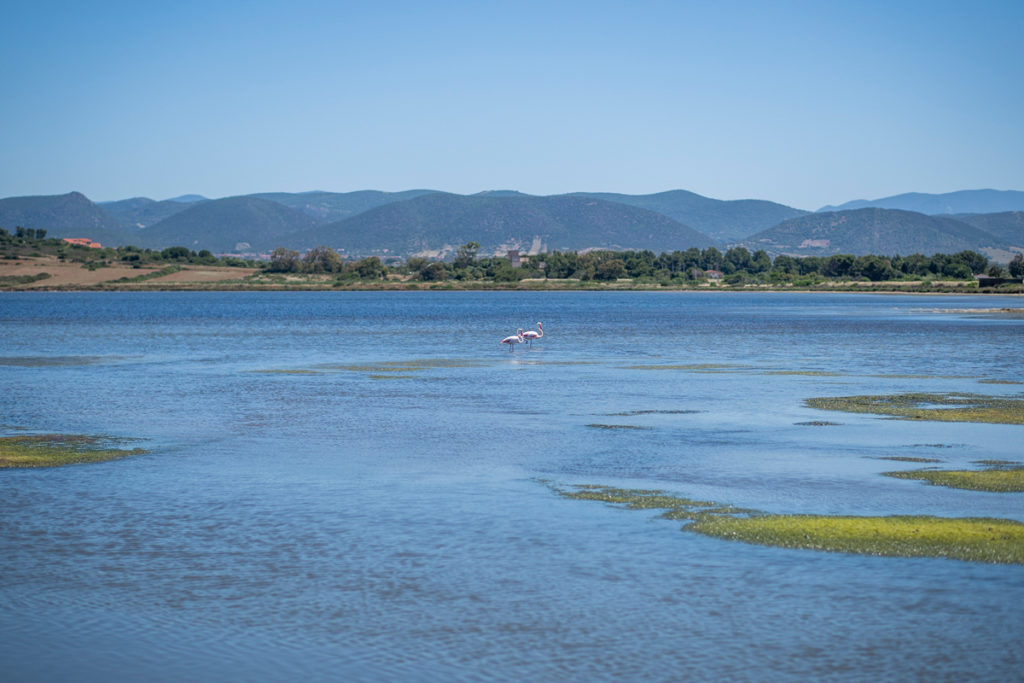
You can walk along the beach from Porto Pino or drive to the “Parcheggio Dune Porto Pino Is Arenas” car park, which is subject to a fee (€7 per day and car). This approximately 6 km long gravel road leads through military terrain and around 7:30 p.m. you have to make your way back because the entrance and exit closes at 8 p.m. Since we didn’t want to pay the €7 for our short stop, we drove on and only saw the dunes from a distance.
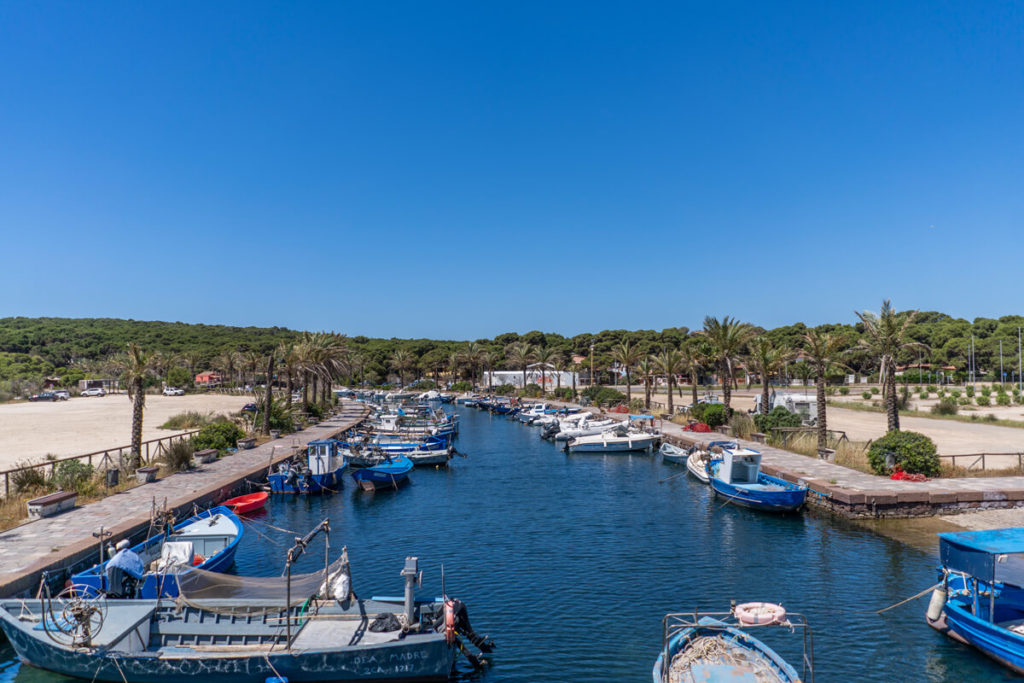 Powered by GetYourGuide
Powered by GetYourGuide
4. Spiaggia di Piscinnì & Torre di Pixinnì
From Porto Pino, we continued on the SS195 before turning onto the SS71 shortly before Teulada, which led us directly along the sea. Along the way, we discovered numerous beautiful beaches, picturesque bays, and charming towns. We started with the natural beach of Spiaggia di Piscinnì, which is idyllic and quite secluded. The water is crystal clear and the sand is predominantly fine and white. According to previous guests, there is often dried seaweed lying around on the beach, but this shouldn’t be a problem.
If you follow the road for another kilometer, you will see the Torre di Pixinni in the distance. This ruin is not overrun by tourists because it is located quite remotely. If you have enough time, you can take a 20-minute hike to the tower and explore one or two smaller beaches (e.g. Caletta di Torre Pixinnì) around it. We particularly liked the lush green landscape, which, together with the turquoise sea, provided a beautiful backdrop.

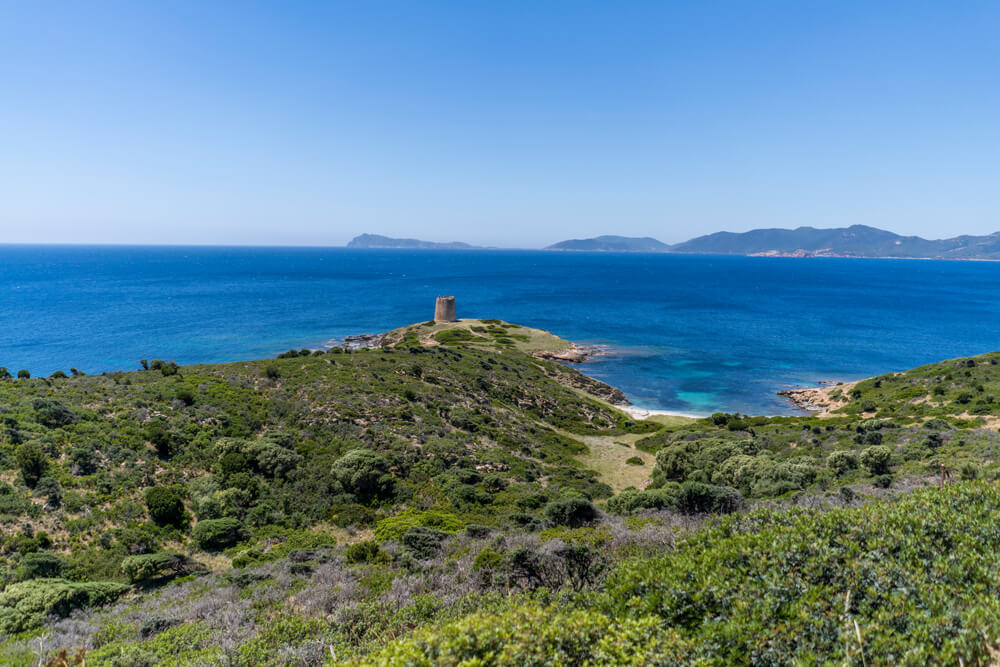
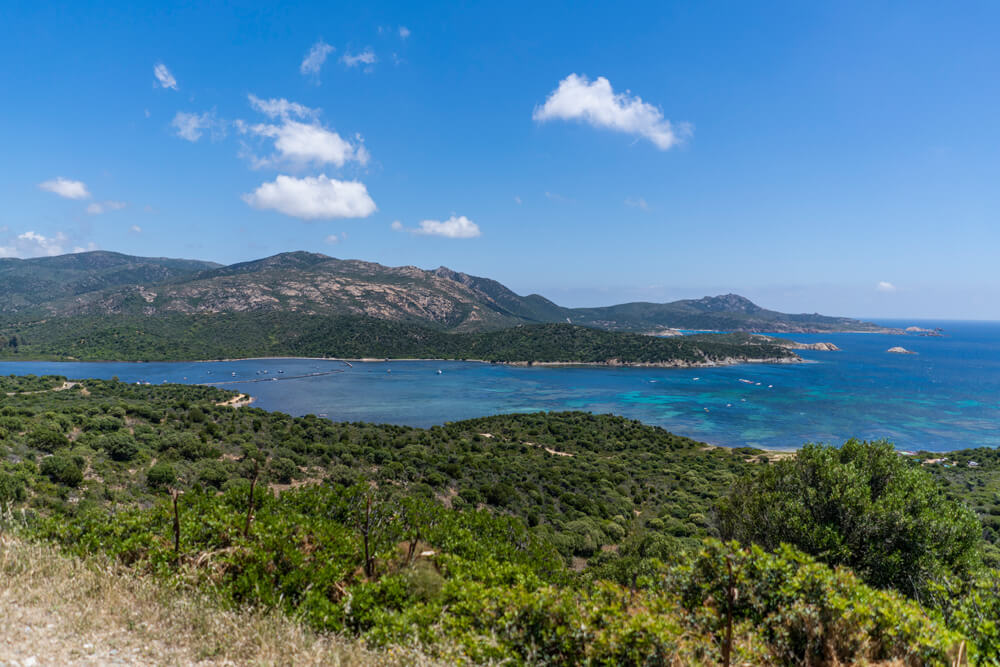
5. Spiaggia di Tuerredda
Back on the SP17, we drove to the Spiaggia di Tuerredda, which we only happened upon by chance. Only after our visit did we learn that it is one of the most popular beaches on the Costa del Sud. Even from the panoramic road, we caught our first glimpses of the white, V-shaped sandy beach in the sheltered bay.
We parked our car (free of charge since it was off-season) and strolled to the 400-meter-long beach, which greeted us with crystal-clear water and incredibly fine sand. WOW! What a backdrop. Just 150 meters from the coast lies the small, green island of Isola di Tuerredda, which can be reached by kayak, among other things.
Sunbeds and parasols are available for hire on the beach (prices vary depending on the order), there’s a restaurant and a bar/snack bar, as well as canoe, pedalo, and dinghy rentals. During the season, the beach is almost overcrowded, so we advise against a visit. In mid-to-late May, the atmosphere was still quite relaxed.



6. Lunch break at Su Giudeu Beach
Next, we stopped at Campana Dune Beach and Su Giudeu Beach, where we took a short lunch break. It’s a wonderful place to stroll from one beach to the other and choose a nice resting spot. The fine sandy beach slopes gently into the sea, making it ideal for swimming.
However, it’s also a bit windy, which is why the water can be a bit choppy (popular for kitesurfing). We ordered some sandwiches and coffee at the small Chiosco Bar and let our gaze wander over the sea, the beach, and the dunes.
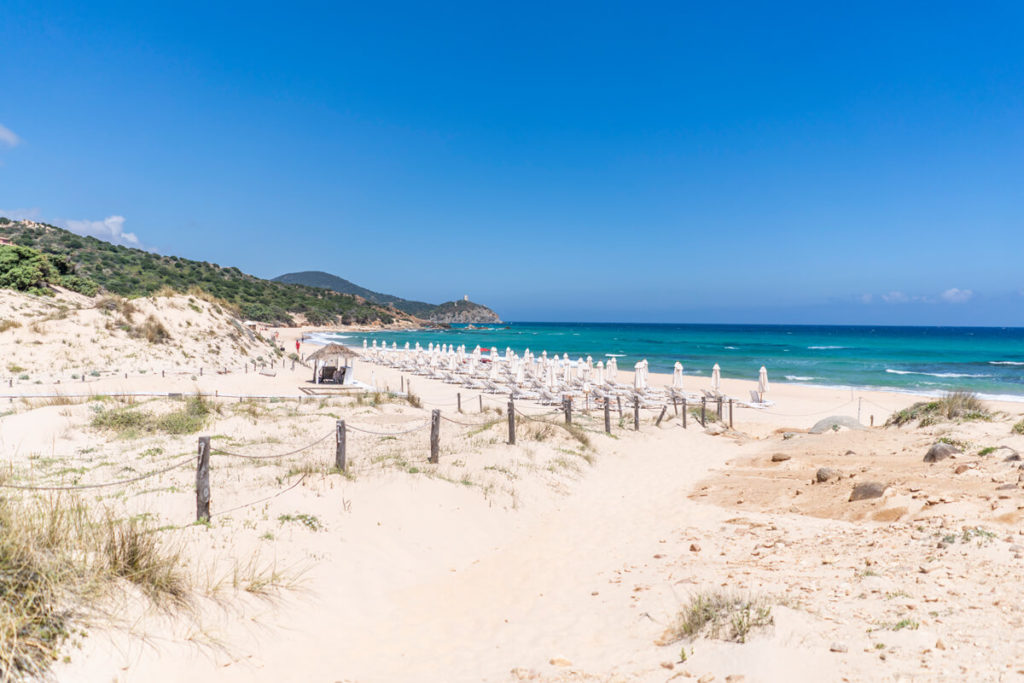
7. Picturesque town of Pula
We drove past the small town of Chia and stopped in Pula without much expectation. We actually just wanted to have some ice cream and ended up in the small town of Pula. We strolled through the winding streets, admired the colorful facades of the venerable patrician houses, and let ourselves be captivated by the charm of this Mediterranean town. Pula is small, colorful, lively, and somehow full of surprises. The colorful pennants and flags stretched across the streets are particularly beautiful. You’ll also find many restaurants, some pretty squares and shops, as well as numerous beaches in the area. Our tip: Get some vegan ice cream at the Gelateria Il Gatto Azzurro and then stroll to the street “Via Nora,” where many colorful umbrellas have been hung. For us, Pula is definitely one of the TOP sights in the south of Sardinia.
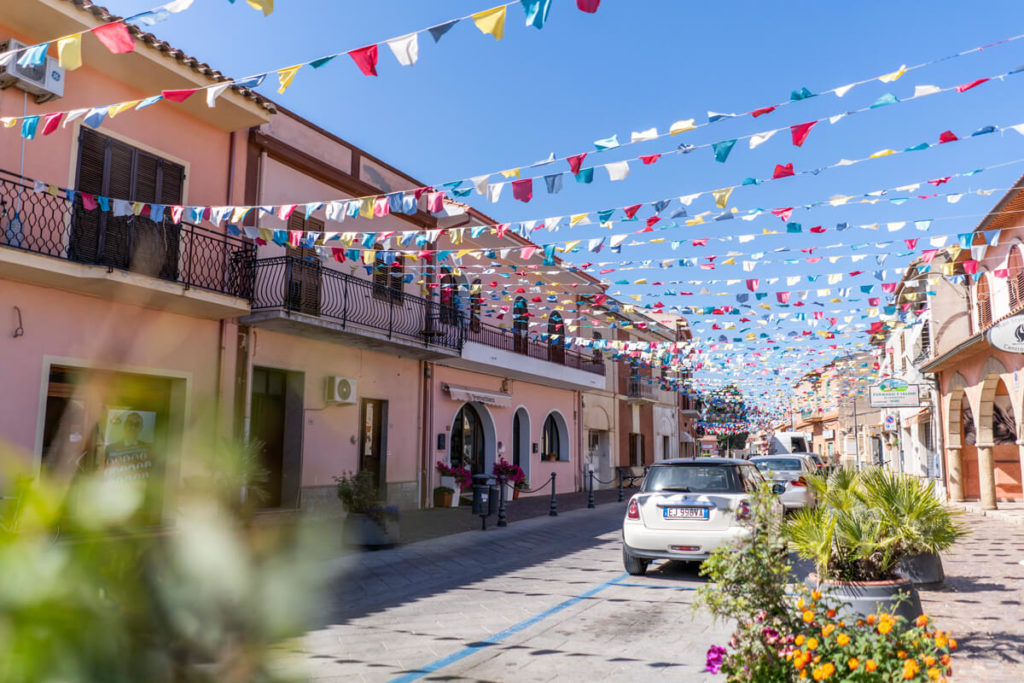
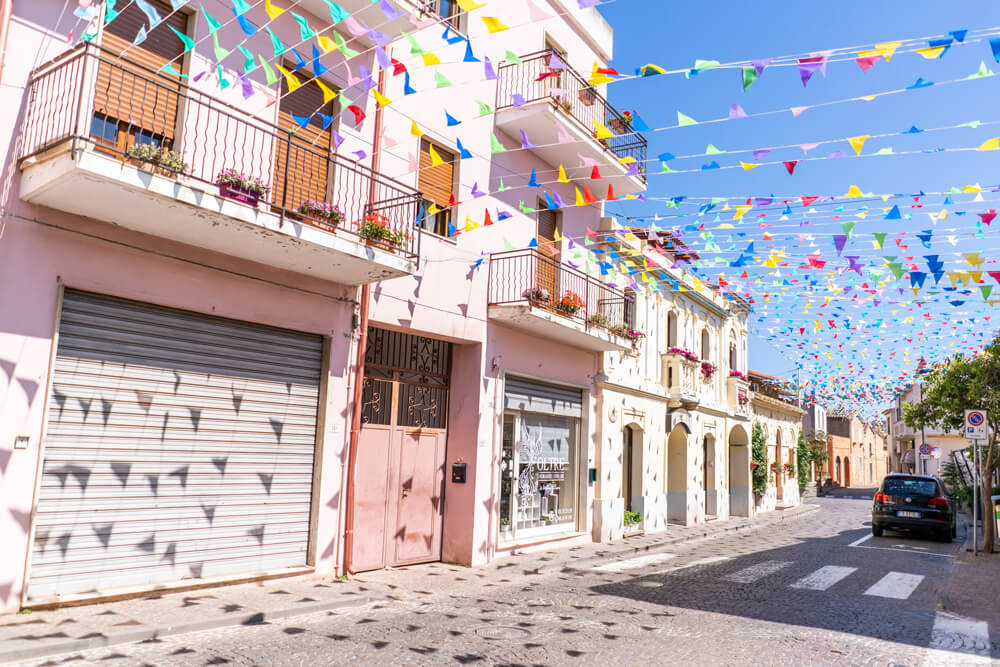

8. The Island’s Capital, Cagliari
The island’s capital, Cagliari, is a great starting point for many to explore the southern part of Sardinia and is also one of the top attractions in Sardinia. If you have enough time, you should spend at least one or two days in the city to see the many sights.
Cagliari has a beautiful old town that invites you to stroll, shop, dine, and explore. The oldest district, Castello, is located on a hill from which you have a beautiful view of the island’s capital. Generally, you’ll find numerous sights in this district, such as the Cathedral of Cagliari or the Bastion of Saint Remy.
Visit the San Benedetto Market and feast on Sardinian specialties, take a trip to the stunning Poetto de Cagliari Beach, marvel at the flamingo colonies in Cagliari’s salt pans, stroll through the city’s botanical garden, or stroll along the magnificent Via Roma boulevard.
You can also take part in numerous guided tours and excursions if you don’t want to explore the city on your own or experience something special.
Popular tours in and around Cagliari:
- Walking tour through the beautiful old town*
- Exciting kayak tour to the Devil’s Saddle*
- Sardinia: Cooking Class – Fresh Handmade Pasta*
- Cagliari: Cycling Tour in the Flamingo Oasis*
9. Panoramic Road Strada Provinciale 17
From Cagliari, the tour continues along the Costa del Sud. Shortly after the Spiaggia Margine Rosso in Cagliari, the panoramic road Strada Provinciale 17 begins, which winds its way along the sea for almost 30 kilometers and takes you to Villasimius. Along the way, you’ll pass countless secluded beaches and bays and enjoy fantastic views of the sea and the coast.
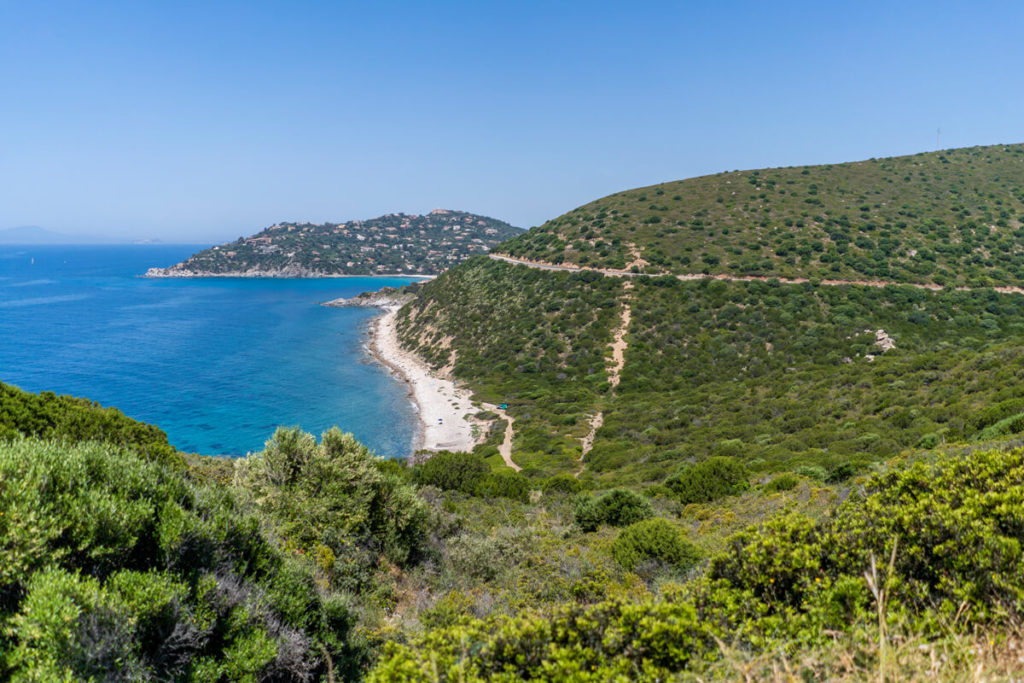
10. Fishing Village of Villasimius & Beaches
We reached the small fishing village of Villasimius, which is often recommended as a stop, especially online. We parked the car along the main road and strolled through the small town. There’s not really much to see, but you can find a few restaurants, bars, and shops in Villasimius. The wraps at My Piadina, across from Bar la Tartana, are highly recommended. The small town center is particularly lively in the evenings, as the bars and clubs invite you to enjoy a sundowner.



We found it nicer down at the Port of Villasimius, where you can book various snorkeling tours and boat excursions. Some providers also rent small motorboats without a license and go exploring independently. Also nearby is the popular beach “Spiaggia di Porto Giunco”, which is spacious and has fine sand.
You can rent parasols and sun loungers on site for a fee. There are also plenty of parking spaces, beach restaurants, and restrooms. A little further up the coast is the popular beach “Spiaggia di Punta Molentis“, which is always well-visited.
Popular tours around Villasimius:
- Villasimius: Capo Carbonara boat and snorkeling tour*
- Try diving without a diving license in Villasimius*
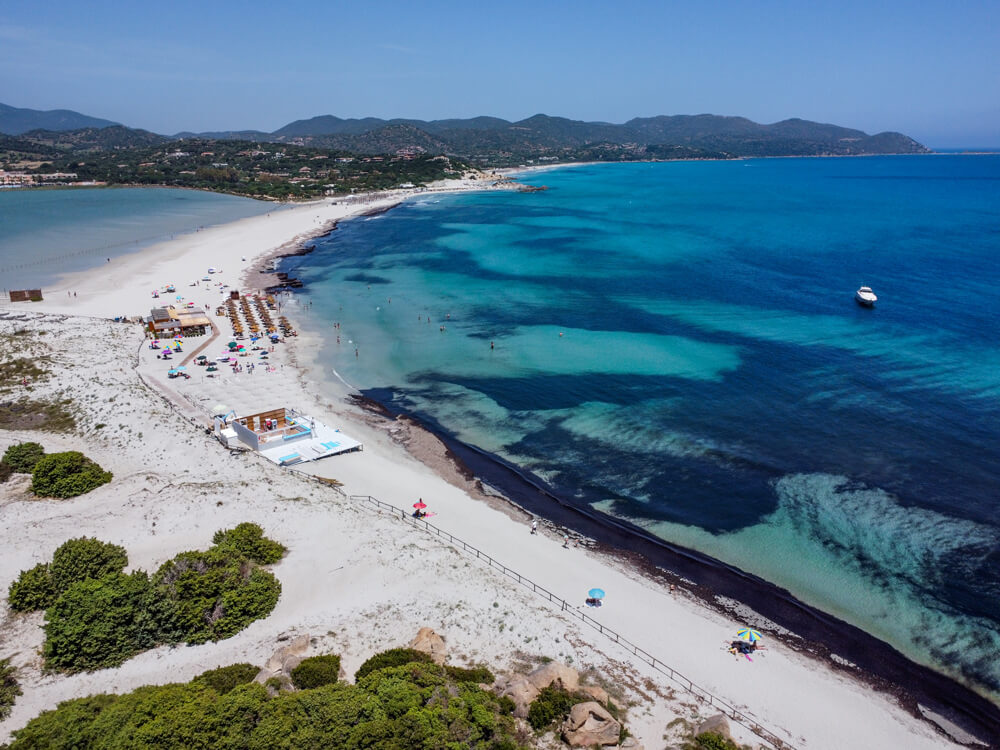
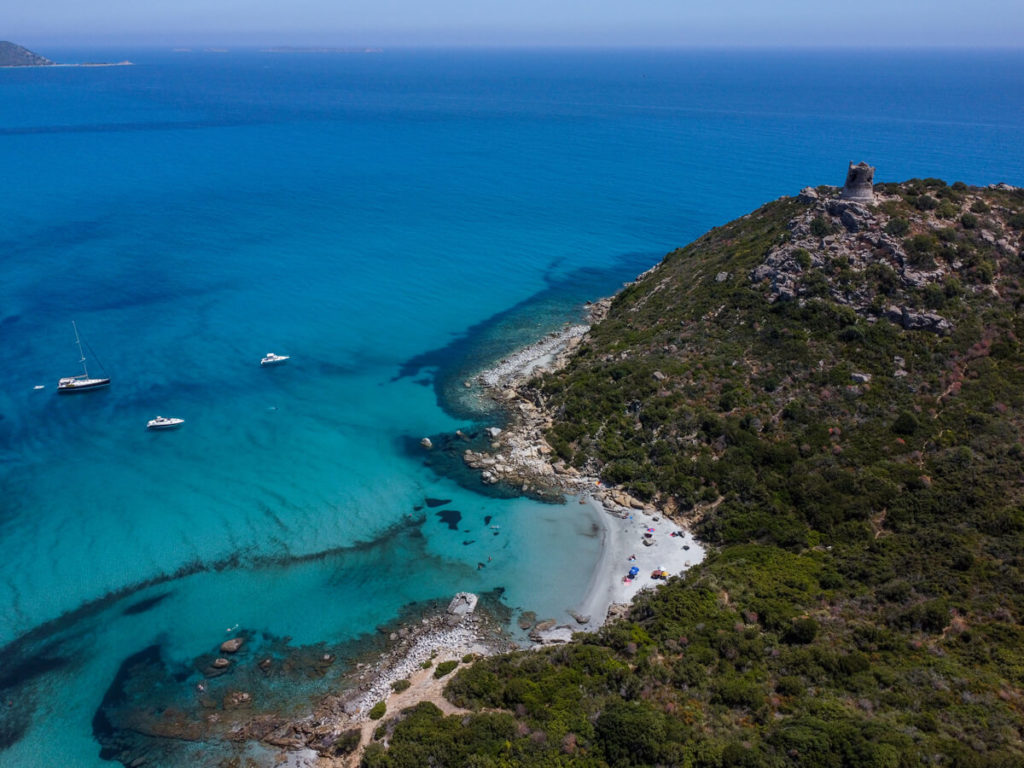
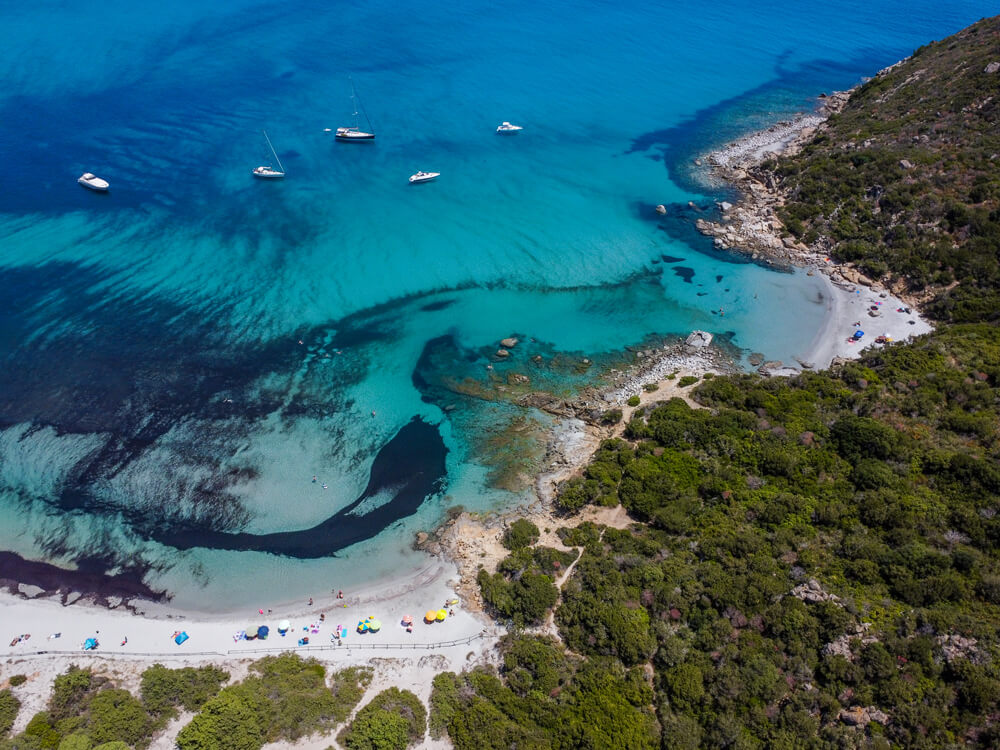
11. Hike to Capo Carbonara
Our actual destination this afternoon was Capo Carbonara, a peninsula-like promontory in the southeastern corner of Sardinia. You can leave your car at the Porto Giunco beach parking lot or drive a little further to the “Belvedere Panoramico.” We were able to park our car there for the hike. However, there are only three or four parking spaces. To the right, the path leads up to the lighthouse, which cannot be visited, however, as it is a restricted military area.



Straight ahead, you can then start your hike (20 to 25 minutes) to the tip of the cape. The views along the way are truly beautiful. We were completely alone there and had the entire cape almost to ourselves. You can also turn off to the beaches of Spiaggia Cala Burroni or Cala Burroni and take a swim.
Once you reach the end, you can discover the offshore island of Isola dei Càvoli with the lighthouse of the same name. You should plan at least 60 minutes for the hike, preferably 90 minutes.
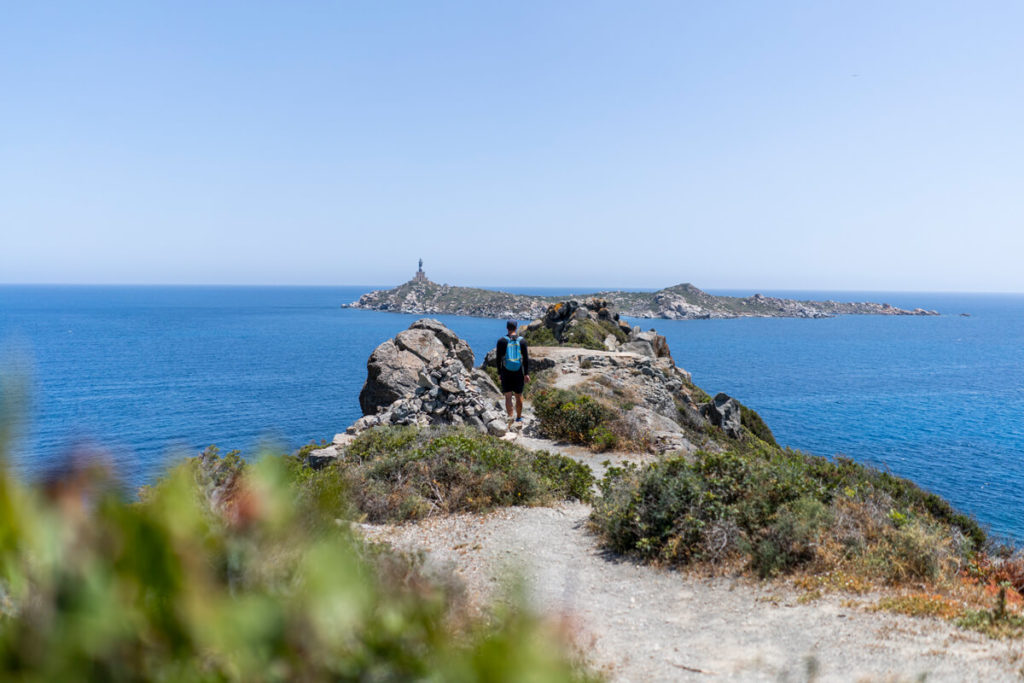
12. The beautiful Costa Rei
Now we come to another highlight in the south of Sardinia, namely the popular Costa Rei, which you will inevitably reach if you follow the SP18 from Villasimius. The approximately 10 km long coastline, also known as the “King’s Coast,” is famous for its light sand, vastness, and numerous bays.
To the north, this coastal strip is bordered by Capo Ferrato and to the south by the rocky and sandy bays of Sant’Elmo. The hilly hinterland with its evergreen maquis and imposing granite cliffs is also particularly beautiful.
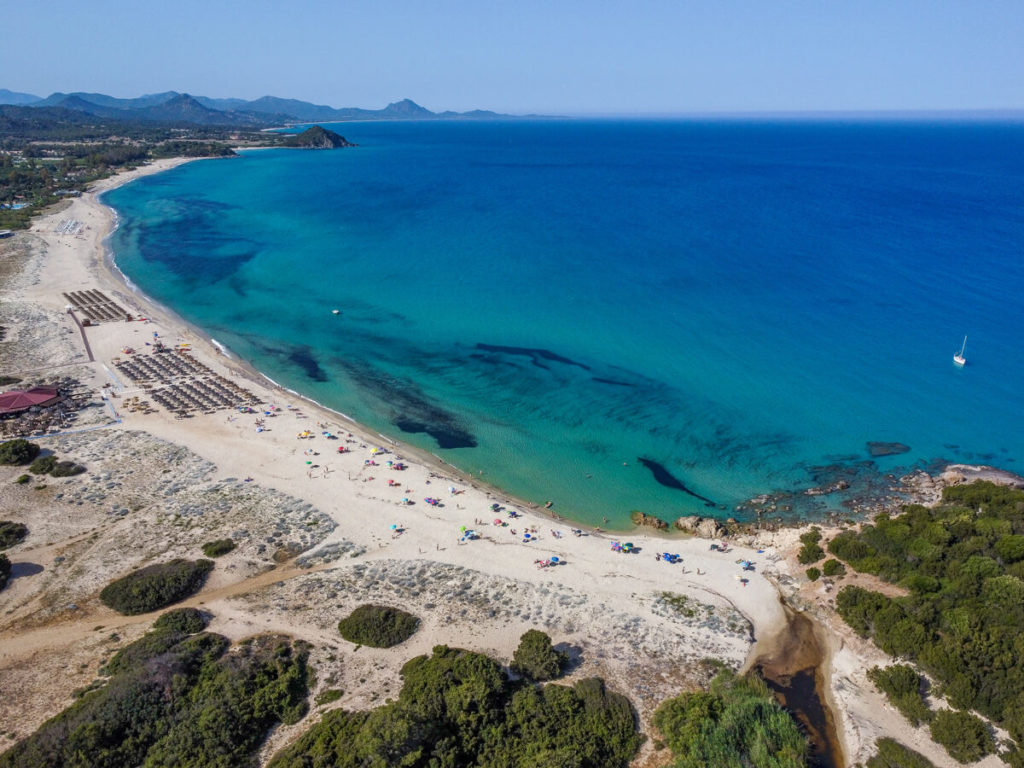
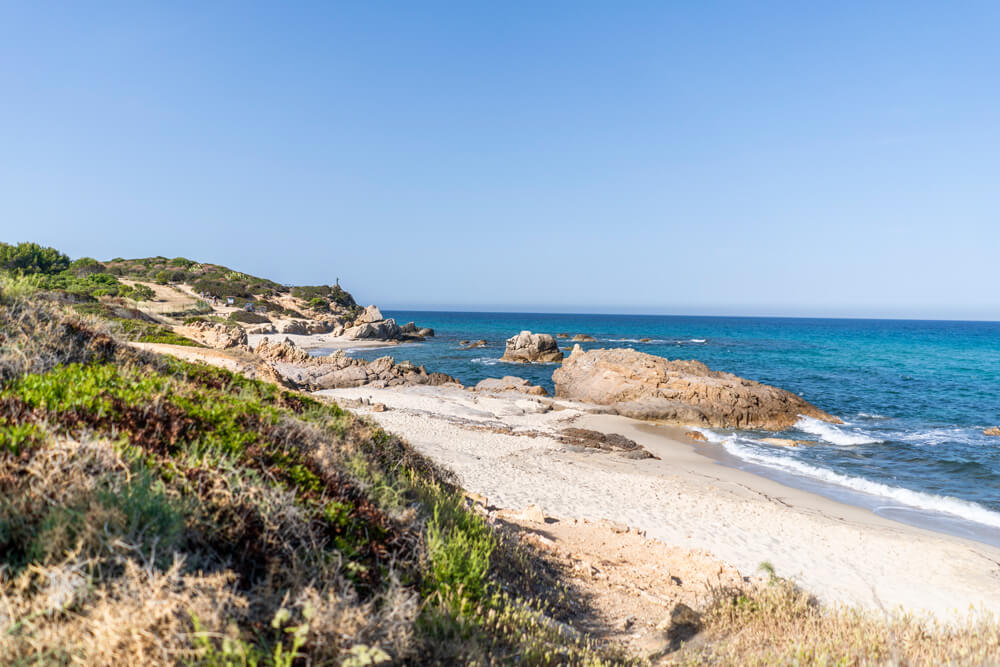

Recommended are, among others, the beautiful and above all quiet Cala Sinzias Bay with its fine sand and turquoise-blue sea, the Spiaggia Sant’Elmo with its imposing cliffs in the water, and also the Turtle Island at Spiaggia di Santa Giusta.
Just before that, on a rocky outcrop, you’ll find the Monumento di Gesù, from where you also have a beautiful view of the sea. Along the Costa Rei, there are numerous holiday resorts, guesthouses, and hotels, as well as shops, restaurants, and bars. Here, you can spend a super-relaxed, car-free vacation.
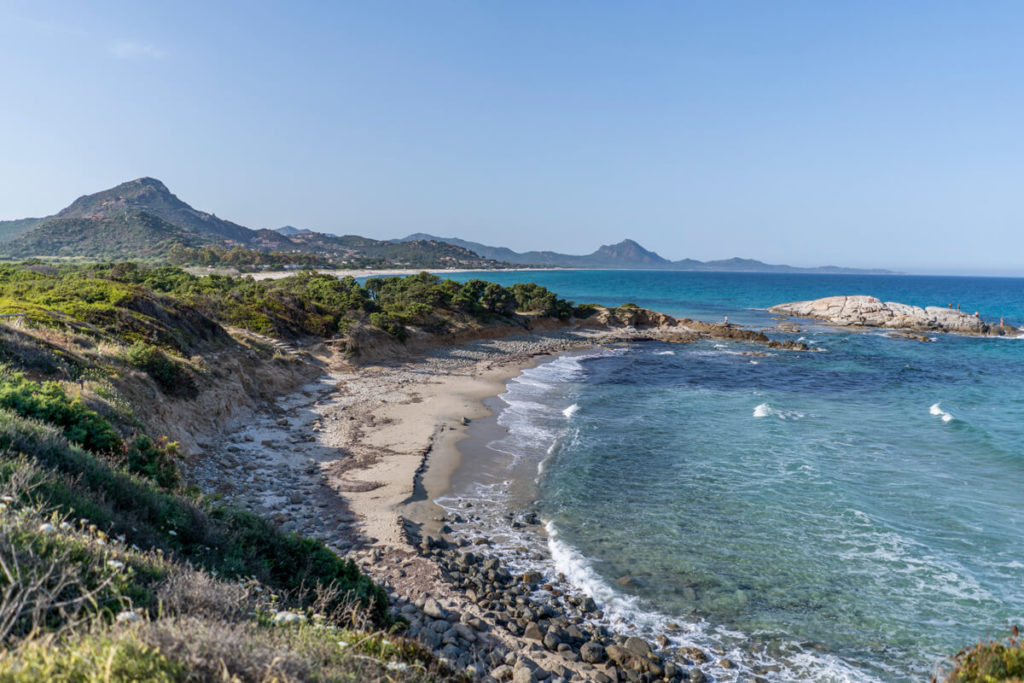
13. Hike to Monte Ferru
We decided to hike to Monte Ferru because we wanted to get some exercise. We parked the car for free in the “Parcheggio per il sentiero di Monte Ferru” parking lot, from where our tour started. Armed with sufficient water and provisions, we walked the first few meters along a gravel path before a sign pointed us to the hiking trail “Sentiero Monte Ferru”. In the really hot temperatures that day, we continued upwards over heavily weathered lava rock slabs and large volcanic cliffs, past countless and, above all, giant prickly pear cacti.
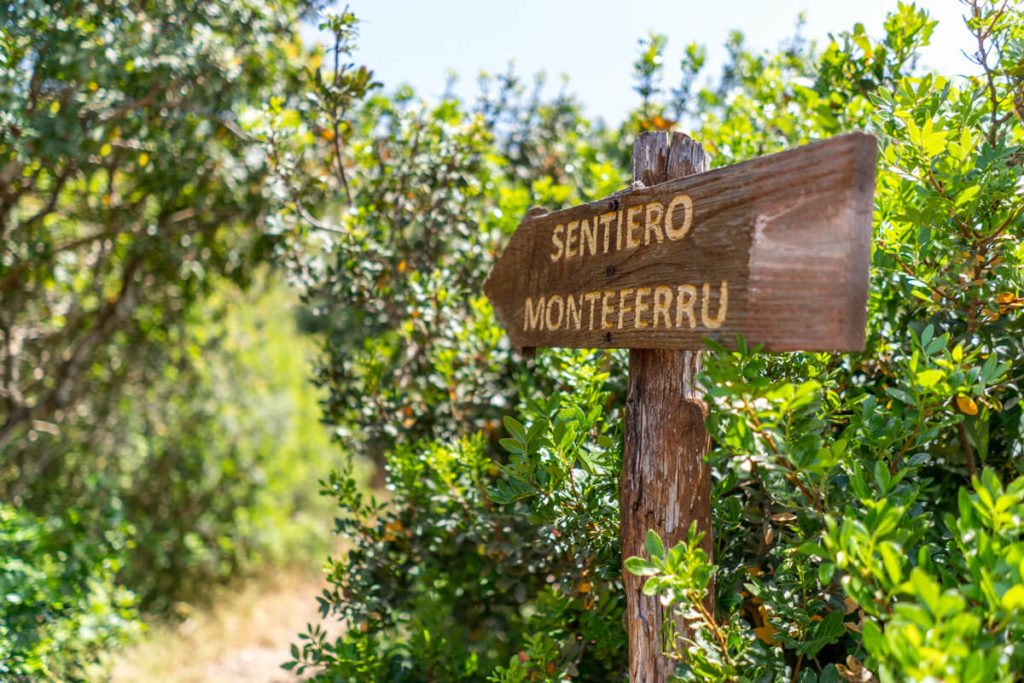
After about 1.5 hours (approx. 3 kilometers), we reached the Torre di Monte Ferru (old watchtower), which was supposed to warn against pirate attacks during the Spanish occupation. The 300-meter-high Monte Ferru gave us a fantastic view of the entire southeast coast of Sardinia. You can also see Capo Ferrato and the seemingly endless Feraxi Beach from up there. We took a short break and then hiked down the other side to Spiaggia di Portu de S’Ilixi, where we cooled off in the sea after the strenuous hike. Brief tour details | Tour data long.



Sardinia Sights in the South – Our Conclusion
We really liked the south of Sardinia, especially the many endless sandy beaches, the turquoise sea and the diversity of the region. Whether it’s charming towns and villages, lush hilly landscapes, secluded bays and beaches, scenic panoramic roads, or the many natural highlights in the hinterland – the south of Sardinia is truly impressive. If you’re planning your vacation in the south of Sardinia, we especially recommend the southeast around Villasimius and Costa Rei.
How much time should I plan for the south of Sardinia?
If you’re doing a round trip, we recommend at least 4 to 5 days for the south, but 7 days or more are better. If you’re planning a pure beach vacation in the south of Sardinia, you should stay for at least a week. The more time you have in Sardinia, the more you can discover and do.
This way, you can relax and explore the island’s capital, the many great beaches along the south coast, or even take a boat tour. Whether you’re looking for a beach, active, couple, or family vacation, the south of the island is truly suitable for everyone.
When is the best time to travel to Sardinia?
We are absolute fans of the off-season! For us, the month of May was simply perfect, as the temperatures were already summery warm, but costs were still relatively low (free parking, etc.). There weren’t that many tourists on the island yet, which made our trip super relaxing. Locals told us that we should especially avoid the months of July and August, as the Italians themselves are on vacation during these months, and the island is said to be completely overcrowded.
The many beautiful beaches are full, the hotspots are overcrowded, and rental car and hotel prices are significantly higher. The best time to travel to Sardinia is in May, early June, or from the end of September to October. The island is much more relaxed then. In May, we had temperatures between 27 and 30 degrees almost every day, hardly any clouds in the sky, and flowers were blooming everywhere. We also went swimming on many beaches, as the water temperatures in May were already very pleasant.
Which accommodations can you recommend?
In general, you will find countless hotels, B&B&Bs, guesthouses, and guest rooms. Before our trip, we did extensive research because we wanted to stay in nice accommodations. It was important to us that they were small, cozy accommodations rather than large hotel complexes. In our separate article, we have listed all the accommodations, presented them in more detail, and also linked them. Be sure to check it out:
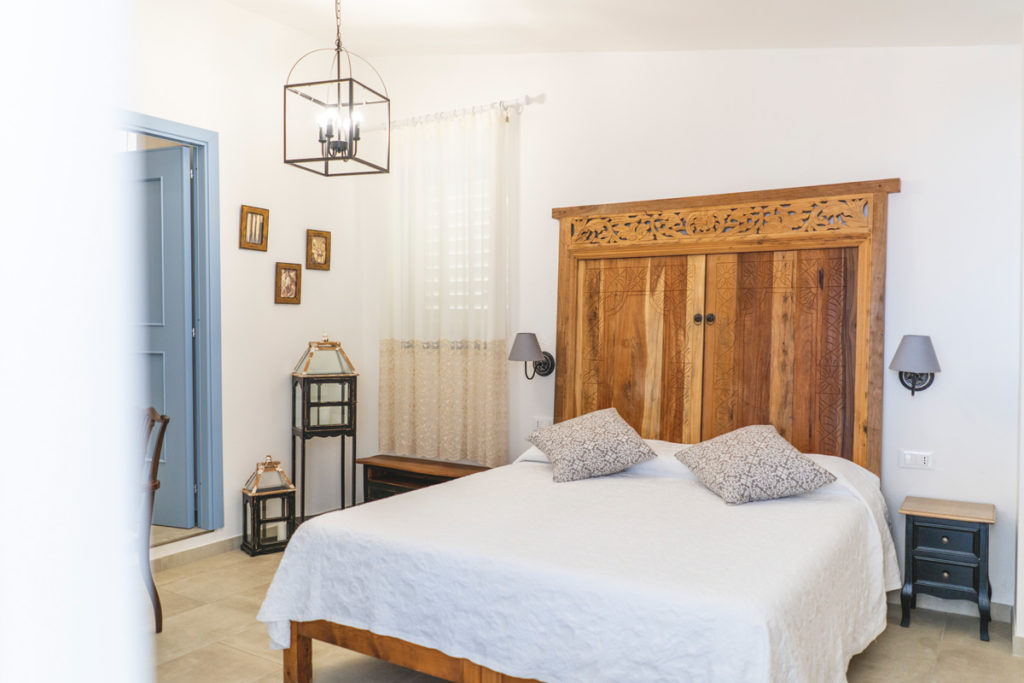
How much does a rental car cost in Sardinia?
Rental cars are currently very expensive throughout Europe, including in Sardinia. During peak season, you can currently expect to pay between €90 and €110 per day. We were lucky and spent a long time comparing prices, repeatedly canceling our booking. While we would have had to pay €899 (€59 per day) for two weeks with the first booking, after the fourth booking it was “only” €582 (€39 per day). So, it’s worth keeping an eye on prices despite booking. We have been booking our cars at www.billiger-mietwagen.de* for many years and can highly recommend this site.
How much does a Sardinia round trip cost?
We diligently kept a budget and noted all expenses during our trip. Prices vary, of course, and depend on, among other things, the time of travel, the type of rental car, your own requirements, and the choice of accommodation. Especially in July and August, you can expect significantly higher costs. We spent approximately €1,400 per person for 15 days in Sardinia (including flights, rental car, gas, accommodations, excursions, food, etc.).
We were on the island from mid-May to the end of May and were able to enjoy the benefits of the off-season several times. And we don’t just mean the financial advantages, but also the empty streets and beaches, the few tourists, the lush landscapes, and the wonderful climate. For us, this month was simply perfect, and our trip couldn’t have been more beautiful. You can find a detailed list of all costs here:
Which travel guide should I use for planning?
Are you still looking for a suitable travel guide for your trip to Sardinia? We recommend the travel guide from DuMont Verlag* and the travel guide from Marco Polo*. We used both guides on the island and consulted them frequently, especially on longer car journeys. If you prefer a more detailed guide, you should get the travel guide from Michael Müller Verlag*. However, we also like to use Google Maps to plan our trip and mark interesting places in advance that we might want to visit while we’re there.